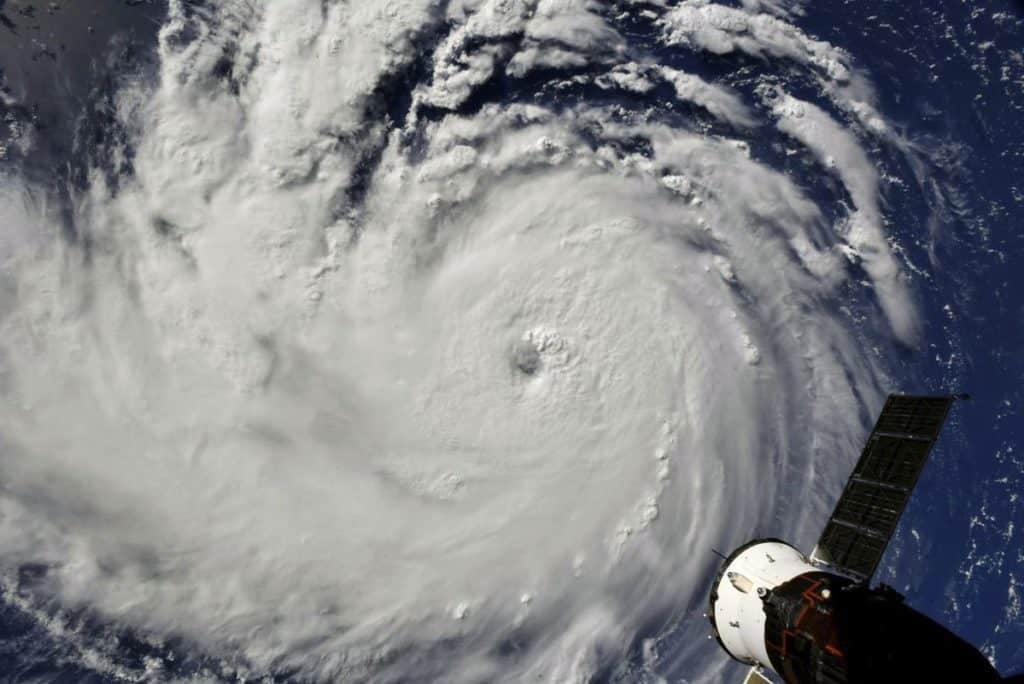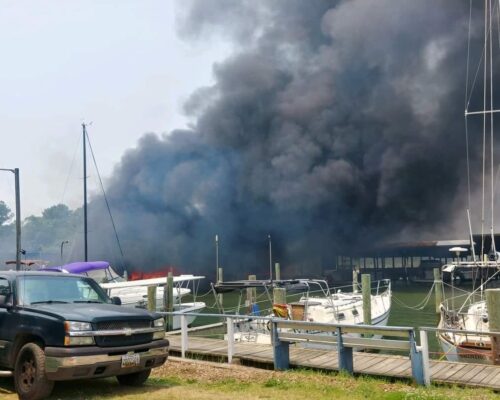The 2020 Atlantic hurricane season was predicted to be above average, and sure enough, named storms started coming in even before the season officially began. Now, Isaias is the name the entire East Coast is talking about.
For boat owners, wind, rain, and storm surge are major threats to property. As the National Watercraft Claims Manager for Progressive Insurance, I work closely with our Catastrophe Response Team, working to quickly resolve our customers’ claims and also helped recover and transport insured watercraft out of harm’s way.
I have reviewed thousands of photos of storm-damaged boats. Some were pushed from their lifts and up onto the roofs of their docks. Some that hadn’t been covered with a roof were basically carried away with the rising tide.
As a boat owner myself, it pains me to see photos like these—especially when I notice that a few simple precautions may have prevented much of the damage. So, based on my own maritime experience and what I’ve seen over the years in my capacity with Progressive, here are a few ways you can keep your boats safe and secure this storm season and beyond.
If you store your boat on a trailer or blocked on land
• Always remove the hull drain plug and ensure your boat’s bow is at a higher angle than the stern.
• Make sure loose items are removed from the interior cockpit and bilge; this creates a clear path for rainwater to drain from the hull.
• Remove any canvas, isinglass, or bimini tops from the exterior—these could act as sails in high winds, or fly off the boat.
• Tie down or remove anything that could catch wind.
• Remove loose personal items and electronics, including any soft items like bedding, clothing, and cushions.
• Remove (and securely store) any ownership documents.
• If available, use a tight-fitting mooring cover or a custom storage cover to protect the boat’s interior.
• Even though the boat’s not on the water, it’s best to make sure its batteries are fully charged and that your bilge pump is operational, including its auto-float switch. This will help remove any water that enters the hull if there’s a blockage to the drain plug’s path.
• The final step is to tie the boat and/or trailer down to the ground using hurricane spikes or other means to protect it from wind or moving water. Your marina management team should be able to help you with this, even if your boat is stored on blocks.
If you must store your boat on the water
There are several types of docks—floating, fixed, lift-based—and each has their own challenges during a big storm. Your best option is not storing your boat on the water during any named storm, but if it’s absolutely necessary, here are some tips to ensure the least amount of damage:
• Follow the same procedure as above to remove personal items, loose equipment, canvas, and isinglass windows. The only exception to this is if your boat doesn’t have a self-bailing cockpit—in that case, you’ll want to keep the canvas installed.
• See if your marina will allow your vessel to be plugged into shore power during the storm—this holds your boat’s batteries at full charge and will keep the bilge pump operational. If not, make sure your batteries are fully charged and your bilge pump’s auto-float switch is in good working order.
• Inspect all dock lines, replacing any that are undersized or show any wear at all. It’s also imperative to look closely for any lines that are rubbing against anything with a sharp angle—these will wear through during a
storm and should be replaced. When replacing your lines, going up a size or more is a good idea.
• Install additional spring lines and bumpers to prevent damage from your boat banging against the dock.
• Boats should never be stored on lifts during hurricanes or other major storms—take them to ground storage.
If you have no way to get it on land before the storm strikes, follow all of the steps above, and set your lift to its highest position.
Once the storm has left the area, it’s a good idea to return to your boat as soon as roads are open so you can inspect any damage. Even if it hasn’t sustained any visible damage, you should dry any interior areas that took on water as soon as possible, especially if any water entered the bilge. The most expensive parts of any boat are the engine, outdrive, or other mechanical systems, and they’re all located at the boat’s lowest point. If you suspect any water got down there, get these systems inspected by a professional immediately to mitigate any damage.
Of course, the absolute best way to keep your boat safe when a storm’s approaching is to move it out of the storm’s path. As soon as you hear storm warnings or watches—or, better still, during fair weather when you have more time—talk directly with your marina’s management team and see what they advise for pre-storm preparation. They’ll know the water and the area very well, so it’s always best to consult with them first. If you plan ahead, you’ll thank yourself when the time comes to put your storm preparedness plan into action.
-Scott Grassie



